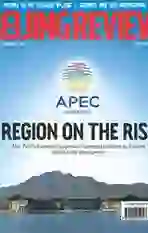A Futile Debate
2014-12-01ByZhangZhiping
By+Zhang+Zhiping
Measuring the pulse, inspecting the tongue, skin, and eyes, and looking at a patients eating and sleeping habits are among the main measures for diagnosing diseases in traditional Chinese medicine(TCM). Recently, a debate on whether measuring the pulse can accurately predict pregnancy has gone viral on the Internet.
Ning Fanggang, a physician with the Beijing Jishuitan Hospital, published an invitation on his microblog for TCM doctors to take part in a competition, deciding whether or not a woman of child-bearing age is pregnant solely by measuring her pulse. Any physician who can determine the result with an accuracy of over 80 percent would win 50,000 yuan ($8,178). yang Zhen, an associate professor with the Beijing University of Chinese Medicine, accepted the challenge. The two agreed to recruit 32 such women and begin the contest.
At present, the reward has increased to 100,000 yuan($16,356) thanks to online donations. A senior TCM physician, Lu Jilai from Chengdu, southwest Chinas Sichuan Province, also signed up for the competition and suggested holding a competition between TCM and Western medicinal practices, offering 200,000 yuan ($32,712) as a reward.
However, although more than one month has passed, the competition has not been put on and has become a war of words between TCM and Western medicine practitioners. The confrontation between the two forms of treatment is an age-old problem.
According to historical records, the basic theory of TCM took shape during the Spring and Autumn and the Warring States periods (770-221 B.C.). The Inner Canon of the Yellow Emperor, a classic TCM treatise, was written at that time and historical records from the 5th century B.C. note that Bian Que, a medical pioneer at the time, was good at diagnosing illnesses by measuring the pulse. TCM also uses therapies such as acupuncture, herbal medicine, qigong exercises and massage.
Unlike TCM, Western doctors diagnose illnesses with the help of advanced medical equipment, technology and laboratories. Therapies include Western medicines, surgery, laser therapy and chemotherapy among others. Western medicines are produced using chemical synthesis or are directly extracted from natural products.
The status of TCM was shaken by Western medicine in the beginning of the 20th century when the former was introduced to China. The debate on whether TCM should continue to exist emerged for the first time back then. Those who opposed TCM were all renowned scholars, most of whom had received Western education, such as Liang Qichao (1873-1929), a leading reformist and philosopher. The debate has never ceased since then.
In 1929, the government revoked all the legal acts restricting TCM under pressure from the TCM community. To mark the event, March 17 was designated as TCM Day.
At the beginning of the “cultural revolution” (1966-76), TCM was regarded as among the “four olds”—old customs, old culture, old habits, and old ideas—and was targeted for removal. Fortunately, it regained the freedom to develop soon afterward. Article 21 of the Constitution adopted in 1982 granted Western medicine and TCM the same status, stipulating that China develop modern medicine along with TCM.
The debate on which of the two treatments is better is futile. A below-80-percent accuracy rate of deciding pregnancy by measuring pulses cannot prove that TCM is useless in treating diseases. Regarding either of the two as real medical science is subjective. Reaching such conclusions shows one doesnt know enough about both practices.
Both Chinese and Western treatments are based on the human body: TCM divides the body into different functions, while Western medicine divides it into different physical parts according to anatomy. The two are the same in physiology. However, they are different in terms of pathology. Chinese medicine assumes that all illnesses are caused by disharmony in the inner body and treats diseases by regulating it, while Western medicine believes illnesses are caused by physical sources that are both measurable and detectable. These differences constitute the core controversies between the two treatments.
Chinese and Western medicine should not counter each other but seek common ground while admitting their differences. Both have their limitations and should develop further. Although the two forms of medicine explore the secrets of the human body through different perspectives, they have the same purpose: to reduce humans suffering from illnesses and diseases.
